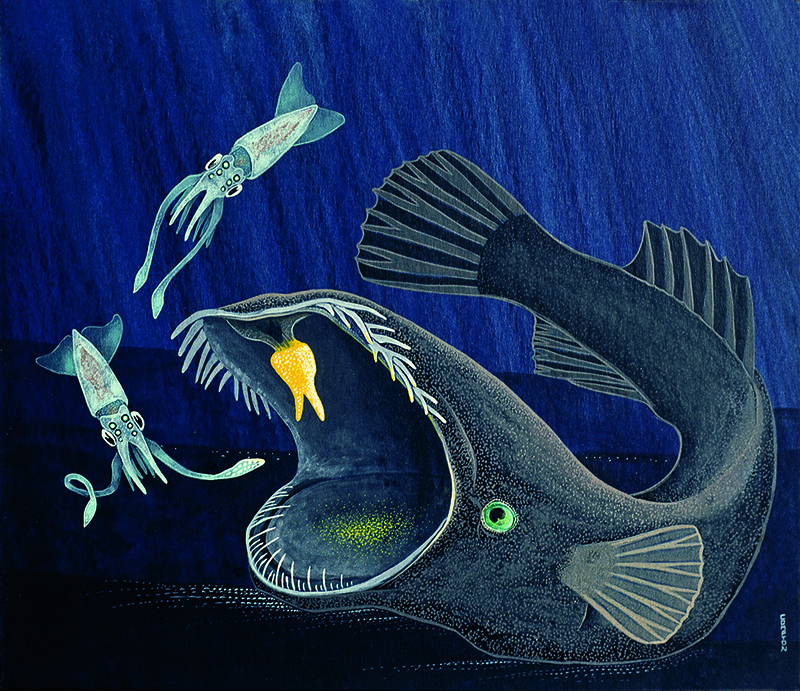


David McKee, a retired biology professor from Texas A&M University, never got the chance to talk to Henry Compton about his art. Compton, an eccentric marine biologist and local fishing pier manager, passed away the week the two men were supposed to meet. After Compton’s death, two cardboard boxes of his belongings ended up in the garage of his sister-in-law, Helen Compton, where they sat for about six months until she gave McKee a call—Helen had organized the unsuccessful meeting, and knew of McKee’s interest in Compton’s art.
Those cardboard boxes contained paintings, slides, and texts about bioluminescent fish, which became the focus of McKee’s new book, Fire in the Sea.
“My first impression was ‘wow,'” McKee says. “I was already familiar with Compton, and I was thinking, ‘here we go again.'”

In his earlier years, Compton worked for the Texas Parks and Wildlife Department, where he went on some of the first Gulf of Mexico cruises to collect deep sea life from Texas waters. From there, Compton would photograph the specimens, and then paint them into life-like environments. He wrote taxonomical descriptions as well as fanciful and strange narratives to accompany each painting.
“Back in the 1960s, we knew very little about what was in the Gulf of Mexico down at that depth, about a mile below the surface,” McKee says. “In addition to the mythical types of stories he tells about the fish, there’s the science story, about early deep sea research that was going on.”
These paintings and texts eventually ended up in the two boxes that made their way to McKee. Though Compton was a self-taught artist, and perhaps never realized his own artistic talent as such, McKee saw his careful preservation and organization of the art and texts as a clue that he hoped one day to publish the collection.
“I feel like I’ve given birth, here,” Mckee says. “Hank Compton was a borderline genius, and a termendous artist.”
The book, which will be released on Wednesday, includes 59 of these paintings as well as the taxonomy, narratives, and background on the deep sea environment and Compton himself. You can see a sample of these below.








